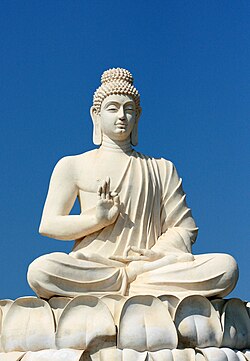This article needs additional citations for verification .(July 2012) |

This is a list of writers on Buddhism. The list is intended to include only those writers who have written books about Buddhism, and about whom there is already a Wikipedia article. Each entry needs to indicate the writer's most well-known work. Multiple works should be listed only if each work already has a Wikipedia article.
Contents
- Early Buddhism
- Theravada Buddhism
- Other Theravada writers
- Politics
- Scholars
- Mahayana Buddhism
- Chán/Zen
- Humanistic Buddhism (China)
- Nichiren Buddhism (Japan)
- Vajrayana Buddhism
- Tibetan Buddhism
- Navayana Buddhism
- Western Buddhism
- Writers of fiction and literature
- Writing instructors
- See also
- References


